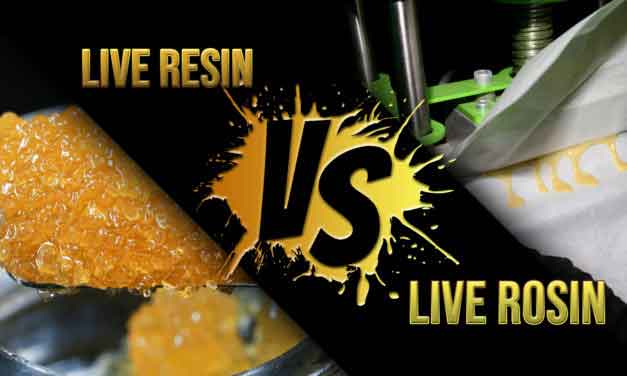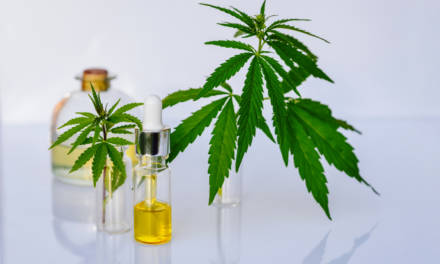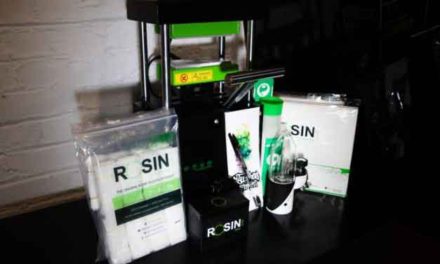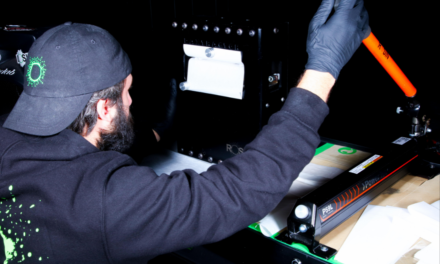The cannabis industry is booming. Nationwide, legal weed pulled in almost $9 billion in 2017, and it looks like 2018 will be even more lucrative. But, what’s next for the green rush? Simply put, cannabis concentrates like rosin are the future, and producers are getting in on this game changer or getting left behind.
Cannabis extracts have ballooned in popularity in recent years. In Oregon, concentrates have seen an 11 percent increase in sales last year alone. This increase has become a year after year trend and seems to be showing a change in consumption habits among cannabis enthusiasts and medical patients. It’s not just the consumers who are high on extracts either, many of the industry’s leading figures don’t just see a growing sector, they see the future of the cannabis industry as a whole.
Ben McCabe a Solventless Expert and Consultant puts it this way: “Rosin is the newest, hottest form of extraction and more and more people are discovering it every day, meaning demand is growing.”
Rosin is rapidly becoming the darling of the cannabis world. According to Marijuana Business Daily (see image 1) rosin was the largest growing product in Colorado and Washington state in 2016, with 3,062 percent sales growth. Not just that, a 2018 study analyzed social media users Twitter posts between 2011 and 2017 and found that rosin was by far the most talked about concentrate, citing its non-solvent nature as the biggest draw. Consumers see rosin as a cleaner, healthier, and more natural form of concentrate that not only has similar levels of potency to solvent-based extracts but also retains far more flavor.
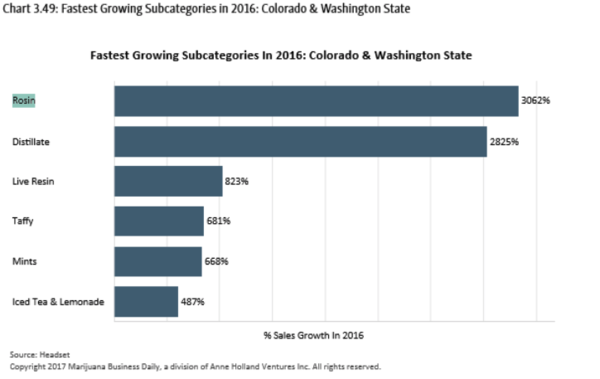
“People are turning away from solvent based extracts in favor of rosin, because it’s a cleaner more direct representation of the strain or starting material,” agrees McCabe.
The bottom line is that the demand for rosin is skyrocketing. While that alone is reason enough for producers to start making rosin, the benefits don’t end there. Overall, rosin production is a much more straightforward process compared to solvent-based extraction methods. A commercial BHO vacuum rig can cost tens of thousands of dollars more than a rosin press, so producers can recuperate equipment costs much quicker.
“The start-up cost for a high-end rosin press and supplies is less than 10k, which is a fraction of the cost of a butane or CO2 machine,” McCabe says. “The CO2 machine I used to work on was about $180,000. The butane machine is 30 to 40K. That doesn’t include the solvent cost to run the machines or the 220 electrical requirements, or the $2,000 per month plus labor. A rosin press requires parchment paper and filter bags. Monthly cost of running a rosin press is about $1,500 per month plus labor.”
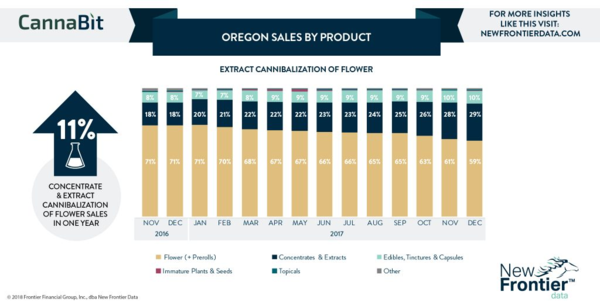
Yields are also favorable; while a commercial BHO rig can produce more extract in one go, making rosin with a press takes a fraction of the time. Therefore, because rosin presses can be run more often, it makes comparable in terms of yield to its solvent-based equivalents. What makes rosin even more lucrative is that it can be made from almost any cannabis, from traditional flower to bubble hash, and even sift. It’s an incredibly versatile extraction method with minimal overheads to begin production.
Another huge advantage is safety. It’s no secret how dangerous solvent-based extracts can be to produce, every few months there are horror stories of facilities exploding and causing deaths and injuries. With rosin however, there’s no risk at all.
“Rosin only uses heat and pressure, nothing volatile whatsoever. There’s no danger aside from two heated plates no hotter than a stove,” says McCabe. With nothing explosive or flammable used during production, it’s a much safer option for producers.
“With proper training, proper machinery and a properly designed lab there shouldn’t be any issues with solvent based extraction units, but without these things, it can be very dangerous.” McCabe adds.
Rosin’s safety is most notable when it comes to licensing. California requires a volatile substances permit to produce BHO, which is not only harder to procure, but in many towns and cities it’s completely prohibited due to the potential danger. Getting licensed to produce rosin, on the other hand, is easier and banned in less districts. To make rosin in California, producers will just need to apply for a non volatile substance permit.

One more bonus of rosin is staff training. Because the method to making rosin is more straightforward, a team can learn to produce decent results in a day, and it’s possible for an individual to learn in a matter of hours. Plus, these employees will not require qualifications or special training in order to do so, unlike those who work with solvent-based extracts.
The future is bright for solventless concentrates. With all the many benefits, getting involved is a no-brainer. And McCabe couldn’t agree more: “The demand will only increase for solventless extraction specifically rosin and ice wax. I would expect rosin to dominate the market in the coming years. Also the low startup cost and maintenance is extremely attractive for large scale processors.” So, what are you waiting for?

